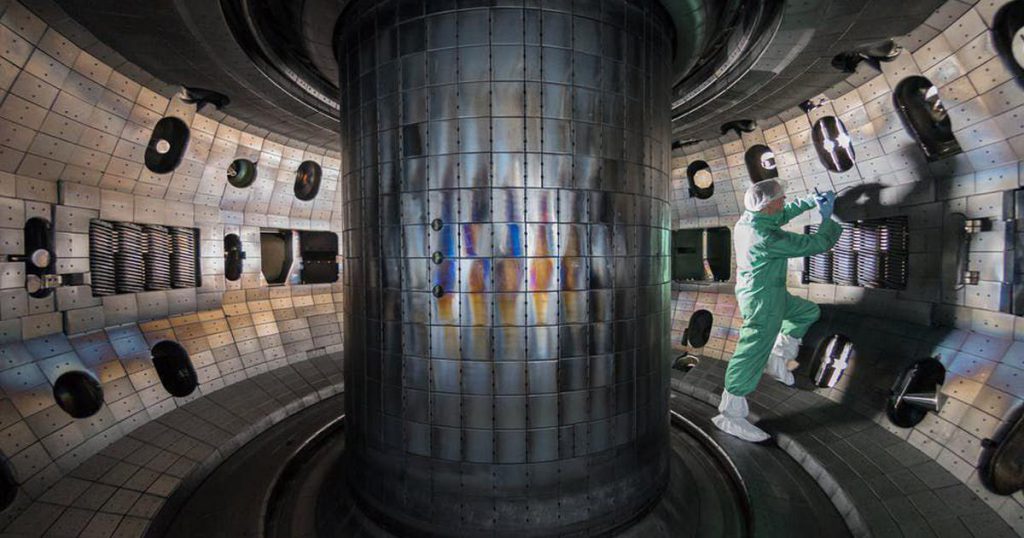The JET laboratory in the United Kingdom has broken its own world record for the amount of energy it can extract by compressing two types of hydrogen together.
If nuclear fusion can be successfully replicated on Earth, it opens the door to nearly limitless amounts of low-carbon, low-radiation energy.
Over the course of five seconds, the trials produced 59 megajoules of energy (11 megawatts of power). This is more than double what was obtained in 1997 in similar testing.
It doesn’t produce a lot of energy – only enough to boil roughly 60 kettles’ worth of water. The relevance, though, is that it confirms design decisions made for a larger fusion reactor currently under construction in France.
“The JET experiments put us a step closer to fusion power,” stated Dr. Joe Milnes, the reactor lab’s chief of operations. “We’ve demonstrated that we can create a mini star inside of our machine and hold it there for five seconds and get high performance, which really takes us into a new realm.”
The ITER facility in southern France is backed by a group of governments from across the world, including EU member states, the United States, China, and Russia. It is believed to be the final stage in demonstrating that nuclear fusion can be a reliable source of energy in the second part of this century.
Future fusion power plants would emit no greenhouse gases and just a small quantity of short-lived radioactive waste.
Prof Ian Chapman, CEO of JET, stated, “These experiments we’ve just completed had to work,” “If they hadn’t, we’d have serious doubts about ITER’s ability to meet its objectives.”
Fusion is based on the idea that energy may be generated by pushing atomic nuclei together rather than separating them, as in the fission processes that now fuel nuclear power plants.
Huge gravitational forces in the Sun’s core allow this to happen at temperatures of roughly 10 million degrees Celsius. To create fusion at the considerably lower pressures achievable on Earth, temperatures must be significantly higher – exceeding 100 million degrees Celsius.
This is a lengthy game, and it’s notable that a quarter of the 300 or so JET scientists are still in their early stages of their careers. They’ll have to carry the research baton forward.
Dr. Athina Kappatou, who is in her thirties, remarked, “Fusion takes a long time, it is complex, it is difficult,” “This is why we have to ensure that from one generation to the next, there are the scientists, there are the engineers and the technical staff who can take things forward.”
There are no materials that can tolerate direct contact with such high temperatures. To accomplish fusion in a laboratory, scientists created a method in which a super-heated gas, or plasma, is contained inside a doughnut-shaped magnetic field.
For almost 40 years, the Joint European Torus (JET) at Culham, Oxfordshire, has been at the forefront of this fusion method. It has been built up to imitate the predicted ITER setup over the previous ten years.
However, there are still a lot of technological hurdles to overcome. The Eurofusion group, which includes 5,000 science and technical specialists from throughout the EU, Switzerland, and Ukraine, is working on these difficulties in Europe.
The United Kingdom is also a participant. However, before Britain can fully participate in ITER, it must first “associate” with some EU research programs, which has been hampered by debates over post-Brexit trade arrangements, notably in respect to Northern Ireland.
